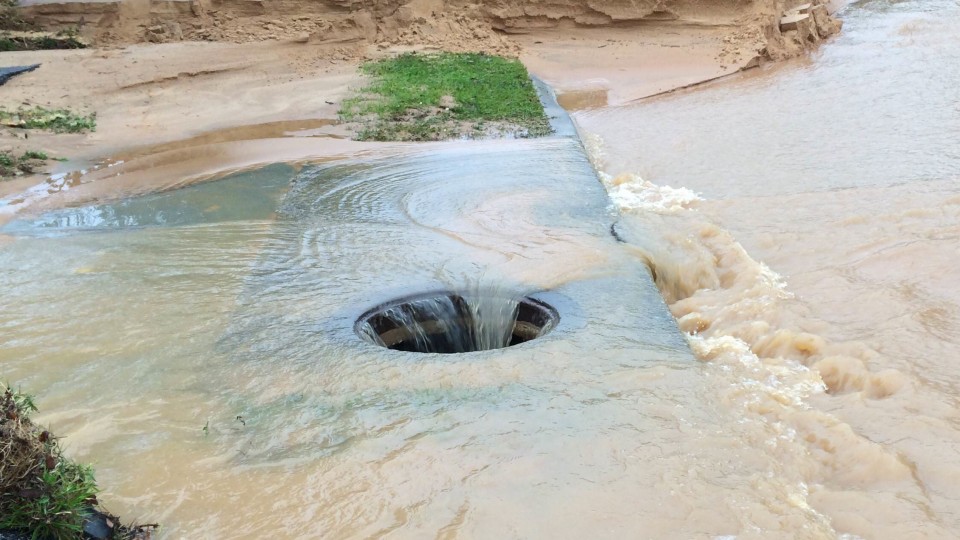Looking west for stormwater inspiration
- June 16, 2014
- / Shannon Nickinson
- / training-development

Is it time for Pensacola to take some lessons from the Crescent City in water management?
Maybe so according to a group of local business leaders and concerned citizens who are pushing local government officials to take the soggy lessons of the April 29-30 flooding to heart.
One of the most outfront of this group has been Ken Ford, president of the Florida Institute for Human and Machine Cognition.
Ford last week told the Pensacola News Journal he was tabling the $8 million county-funded expansion of the research institute “until we are confident the (downtown) flooding problem is addressed.”
The IHMC’s expansion is an important boost to Pensacola’s economy, bringing high-wage jobs built on intellectual capital to the city’s historic district.
Escambia County took a loan from SunTrust Bank for the project and holds the money. Of the $12 million, IHMC has used approximately $4 million to pay off the institute’s pre-existing debt; one or possibly two draws have been taken related to design of the expansion, says county attorney Alison Rogers.
The balance remaining is $8,072,000, she says.
Architect Carter Quina’s firm, Quina Grundhoefer is designing the three-story expansion on Romana Street. He is also is one of those downtown business owners who are left cleaning up after the April flood.
In the IHMC plans, Quina says the goal was to set the new ground floor at elevation 12, which is 5 ½ or 6 feet above grade, and floodproof it up to elevation 16, which includes things like elevating the electrical and using floodproof materials.
But even with that, Ken Ford is concerned he’s had to redo the building they are in now three times.
“These are logical business decisions to be asked,” Quina says.
If the new IHMC building were in place on April 29 at elevation 12, would it have been unscathed?
Quina says possibly yes, “but it is hard to predict. New development changes the way water moves.”
The new building would be situated mid-block, Quina says, and there is a water storage pond designed for the site. But most of the drainage of downtown Pensacola is designed to flow into Pensacola Bay.
In an event where there is an unusually high tide, or storm surge pushes the water level of the bay above where that system’s outfalls drain, the water has nowhere to go but into the streets, businesses and homes of downtown.
In coastal communities like this one, rising water levels is an imminent fact of life, Quina says, which is why new engineering principles for managing stormwater need to be incorporated into both new and existing projects.
“We need more ways to store large volumes of water,” Quina says.
Some of those kinds of features can be seen at work in other coastal communities, such as New Orleans, which is using the Greater New Orleans Urban Water Plan as a guidepost for improving its drainage and water management.
The plan includes steps big and small, from investing in levee control to renaming concrete drainage canals as “rain gardens,” and turning them into either active or passive urban green spaces that in dry times, can be enjoyed as such.
Quina also points to a plan some 30 years in the making that helped improve the quality and health of Tampa Bay. Through a concerted design effort on the part of city and county officials to search out areas that can be turned into stormwater management ponds, garden and other features.
They don’t have to be ugly. They can be like Admiral Mason Park, which has won design awards, and the planned facility on West Government Street at Corrine Jones Park.
But stormwater is a utility that traditionally doesn’t get much attention.
The City of Pensacola first started collecting a stormwater utility fee in 2002. That first year it brought in $1,654,436.30 for maintenance and improvement of the city’s stormwater system.
So far in the fiscal year 2014, it has brought in $2,357,202.95.
In a city where, Quina says, “those old terra cotta pipes can’t just be cleaned out and made functional again, they have to be replaced,” that fee is a place to start, but it is not nearly enough to foot the bill.
Mayor Ashton Hayward has said he plans to pursue more grant funding related to stormwater projects, including resources like the National Fish and Wildlife Foundation, which is funding the $2.1 million Corrine Jones project.
There may be Federal Emergency Management agency dollars to be had as well from the April flooding. FEMA, after all, helped get the old Main Street Wastewater Treatment Plant out of downtown after Hurricane Ivan knocked the plant offline.
That’s where more of the public discussion should be, Quina says.
But stormwater doesn’t usually excite the public imagination.
Until its coming in the front door.
[progresspromise]
 CivicCon launches with a look at good growth in cities
CivicCon launches with a look at good growth in cities
 Building stronger brains one baby, one parent at a time
Building stronger brains one baby, one parent at a time
 SCI debuts commercial on Early Learning City
SCI debuts commercial on Early Learning City
 Entrecon: World class speakers and an opportunity to sharpen skills
Entrecon: World class speakers and an opportunity to sharpen skills
 PYP Quality of Life survey 2017
PYP Quality of Life survey 2017
 EntreCon Pensacola 2016: A look back
EntreCon Pensacola 2016: A look back
 Leadership tip: getting better employee takeaways
Leadership tip: getting better employee takeaways
 Leadership tip: be interested instead of interesting
Leadership tip: be interested instead of interesting
 Leadership tip: delivering difficult messages
Leadership tip: delivering difficult messages
 Brain Bags boost Arc, Early Childhood Court programs
Brain Bags boost Arc, Early Childhood Court programs